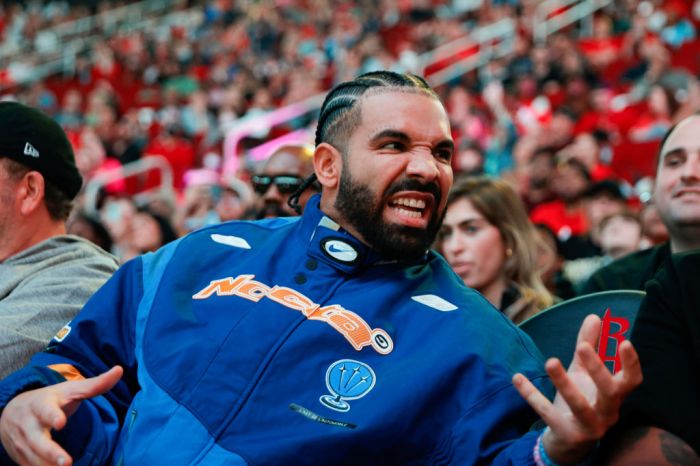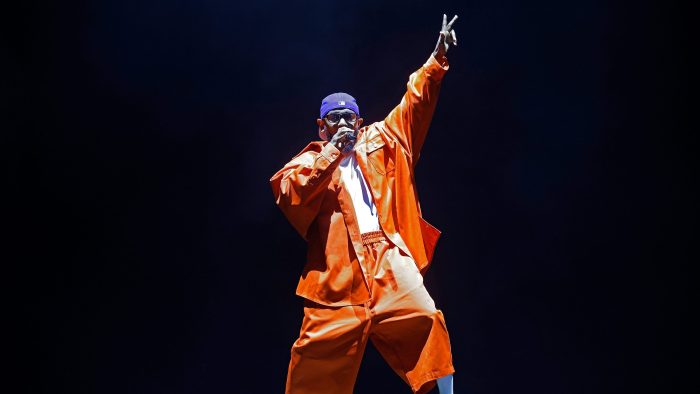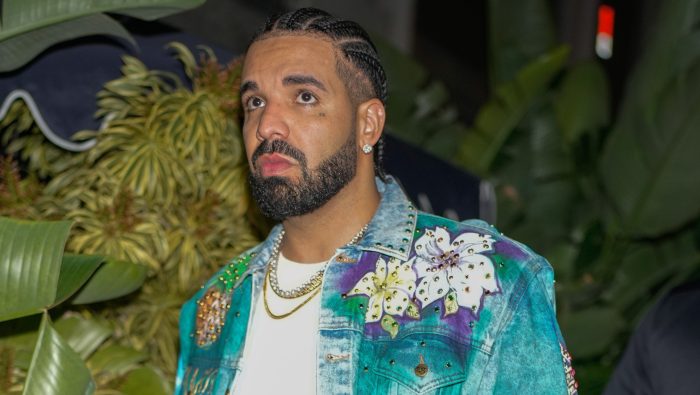On June 17, 2022 — Kendrick Lamar’s 35th birthday — Drake released Honestly, Nevermind. The house-music-inspired album carried the record “Massive,” featuring the salient melody, “I know my funeral gon’ be lit ’cause of how I treated people.” On June 19, two days after his 37th birthday, Lamar ensured those lyrics would never again be heard in a celebratory light.
Lamar’s Juneteenth concert, “The Pop Out,” wasn’t a funeral. Dubbed “Gangchella” on social media for its heavy focus on artists from various Los Angeles neighborhoods and gang sets, it was a lyrical and figurative declaration of allegiance, thus making Wednesday night a pivotal shift in Drake’s career. It also begs the simple yet complex question.
What’s next for Drake?
Of all the questionable decisions Drake made during the battle, perhaps the most baffling was attempting to use Lamar’s hometown against him. From fashion to social media, artificial intelligence and even on wax — Get more love in the city that you from, n—a, he rapped on “Push Ups” — Drake’s miscalculation played out on the world’s stage and directly into Lamar’s favor.
Related Story
Kendrick Lamar’s ‘The Pop Out’ concert turned hate into loveRead now
On the battle’s final punch, Drake waved a proverbial white flag on “The Heart Part 6.” By then, the venom of “Euphoria” was still very much potent. The vindictiveness of “Meet The Grahams” — released only minutes after Drake’s heater of a diss in “Family Matters” — made sure the beef hit a point of no return. And “Not Like Us,” had already become a firestorm he couldn’t extinguish. Wednesday’s concert for Lamar was yet another wicked display of bullying that made Drake’s loss all the more poignant.
Much like in 2015 with Meek Mill and certainly in 2018 with Pusha T, Drake’s supposed character flaws were the primary target of Lamar’s siege. Lyrics such as “Only YOU like being famous” (“Euphoria”), “Take that mask off, I wanna see what’s under them achievements/ Why believe you? You never gave us nothin’ to believe in“ (“Meet The Grahams”), “Your reality can’t hide behind Wi-Fi (“6:16 In L.A.”) or the ubiquitous A-minooorrr and the Atlanta-centric third verse bomb (“Not Like Us”) cut with a sadistic edge. Where Drake asserted dominance for years, reminding peers and foes of chart success or his bank account, none of that mattered to Lamar, a superstar in his own right.
Now, Drake sits in a position he’s never been in. The wave of disdain is inescapable given Lamar’s massive star power and the potency of the laundry list of improprieties levied at Drake. The issue with Lamar, as it was with Pusha T before him, wasn’t that Drake is biracial. How Drake viewed his Blackness became not just a topic of discussion but a weapon aimed against him. Punctuating that with an instant-classic concert streamed on Amazon Prime on Juneteenth is as calculated as anything Lamar has done.
“You are silent in all Black issues, Drake. You really are,” Pusha T said in an interview shortly after their spat. “You don’t stand for nothing. You don’t say nothing about nothing … You have all the platform in the world. You were so passionate back then? No, you weren’t… You gotta think about who a person really is. That’s why it’s OK for you to take that [blackface]photo like this. You don’t know where you stand at.”
“How many more fairy tale stories ’bout your life till we had enough?“ Lamar asked rhetorically during the beef. “How many more Black features till you finally feel that you Black enough?“
Listen to much of Drake’s music in the last several years, and much of it is based on moving wiser and more strategically than his foes. However, on the biggest of stages against the most dangerous of his enemies, Drake showed that the art of war is not his trump card. He was outclassed, outthought and out-barred, leaving him in quite an unfamiliar spot for himself, fans, and critics.
 Drake attends a game between the Houston Rockets and the Cleveland Cavaliers at Toyota Center on March 16 in Houston.
Drake attends a game between the Houston Rockets and the Cleveland Cavaliers at Toyota Center on March 16 in Houston.
Carmen Mandato/Getty Images
“Business as usual” isn’t an option for Drake. There’s no dropping a song or even an album, expecting that to erase whatever mistakes the past may be polluted by. After his spat with Pusha T, the dwindling quality of his music came louder and louder into question. But Drake continued to hold a viselike residency at or near the top of the charts. The stain of the past, though, haunted Drake. Fans relentlessly reminded him of the loss he admitted to taking on a 2019 Rap Radar interview. Drake continued to take not-so-veiled shots at Pusha T on records like Travis Scott’s “Meltdown” and Jack Harlow’s “Churchill Downs.”
This is wholly different. Lamar was not only the superior rapper in the battle. Lamar warped Drake at his own game with an anthem that’s already the song of the summer and the No. 1 song in the country. “Not Like Us” could be nominated for Song of the Year at the 2025 Grammys, likely among several other awards. At every social gathering and many sporting events nationwide, there are bound to be endless people partying to a hit record, calling Drake a pedophile, fake friend and “colonizer.” Outside of that exists records and no-turning-back bars attacking every fabric of his persona — down to surgically constructed abdominal muscles.
A constant theme in Drake’s music has been his part paranoia/part aggression toward the music industry praying for his downfall. Maybe it was jealousy or Drake’s own actions. Whatever the answer, those chickens came home to roost. There is no erasing that from the moment “Like That” was released in March, aside from The Game and Snoop Dogg, the rush to publicly support Drake’s defense was insignificant. In the most intense moment of his career, the greatest hitmaker in rap history was a man with no country and a general with no army.
Related Story
 The Kendrick Lamar and Drake feud is over — or at least it should beRead now
The Kendrick Lamar and Drake feud is over — or at least it should beRead now
It is essential to note Drake’s career is not “over.” He is still a “star.” Whatever direction he decides to undertake in music will be in demand. That being said, the value of a Drake feature (aka “the Drake stimulus package”) and single moving forward — once the most powerful commodity in rap — is unclear. Sexyy Red’s “U My Everything” and Snowd4y’s “Wah Gwan Delilah” were both released after the beef. Neither became major hits, and the latter was widely panned. Even Drake’s feature on the remix to 4Batz’s “date @ 8” in March was dubbed “lukewarm” by Billboard.
Nevertheless, the coveted title of the greatest of all time he chases is no longer in reach. The losses don’t eliminate Drake from such contention. His music becoming baseless, starved of motivation and deprived of meaningful creativity lately has done that. It’s how he moved in said clashes and how, at times, doltish those moves were. In hindsight, they come off even more so. As if they weren’t already, his lyrics will be dissected to an intense degree, and how he stood and fell against Lamar will be judged. Talking recklessly on records is par for the course in hip-hop. Yet, the moment Drake does so again — and it will — he’ll be reminded of how spring 2024 objectively changed the direction of his mammoth career. This logic, fair or not, will follow Drake.
“I like Drake with the melodies,” Lamar rapped on “Euphoria.” “I don’t like Drake when he act tough.”
As Lamar and seemingly all of Los Angeles took a victory lap, Crip and Blood-walking on the charred remains of the beef on stage at “The Pop Out,” so came the questions of when Drake would show face and in what fashion. Regardless, the rest of Drake’s career has already begun. His cultural cachet has never been under this sort of pressure, but where Drake goes from here is entirely up to Drake.
The only place he can’t go back to is what and who he once was. There is no escaping this. Not now, not ever. He can thank Lamar — and himself — for that.
Justin Tinsley is a senior culture writer for Andscape. He firmly believes “Cash Money Records takin’ ova for da ’99 and da 2000” is the single most impactful statement of his generation.



